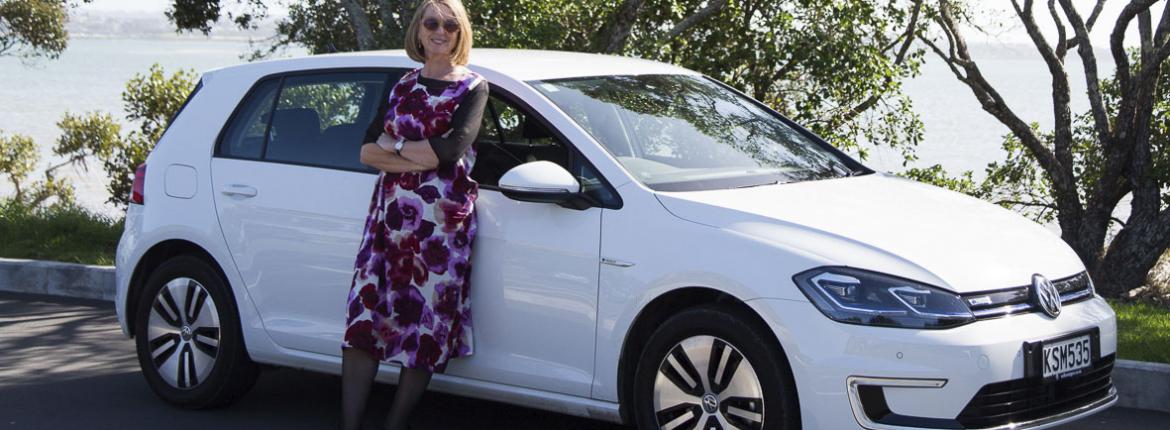The possum sat facing uphill, oblivious to my quiet approach.
I stopped, just behind it, and waited. I was on a rural road with trees close on both sides and it was very dark, with no street lights and no other traffic. I backed up – and still it sat. It wasn’t until I honked the horn that it scurried off into the bush.
This was the first night driving a very new electric VW Golf, on loan for just a few days. I’d been warned of the need to be conscious of pedestrians not hearing me coming – but wildlife?
Silent and gleaming white, I moved on through the night like a ghost. Such was the car’s smooth, stealthy glide there was a surreal quality to driving it. I don’t often get to experience brand new cars, so it was going to be special however it was powered – but being transported by pure electricity made it almost magical.
But it’s not magic here, it’s science. According to its spec. sheet, the e-Golf has a 100kW electric motor, with 290Nm torque, acceleration from 0 to 100 in 9.6 seconds and it can travel 220km on one charge. This has been tested, by the AA, in real-world conditions with two passengers and the air conditioner on.
I found driving it an absolute breeze. I expected it to be different to a combustion-powered car, but it wasn’t. It was light and sporty. It clung to the corners and responded immediately to a touch of the accelerator, zooming up to the motorway speed limit effortlessly.
It thrilled me with its bells and whistles, its lane change warnings, speed limit reminders, safety elements galore and easy-to-use entertainment and navigation system. I liked that it knew it was me on approach, so that I could lock and unlock it without having to find the keys in my handbag.
Yes, I had anxiety – but only related to the fact I was driving someone else’s shiny new car to, from and around a traffic-laden city. There was none of the ‘range anxiety’ that pops into conversations about driving electric vehicles. It was very easy to see how many more kilometres I had to go before plugging in.
How many kilowatts I was using on average, how much power was being charged as the car braked, and what range was still available were very clearly displayed on the dash. I felt more informed than in my own familiar, petrol-powered car.
When it came to recharging it – again: easy. Out of the boot came the lead and plug, into the wall socket it went. A little light blinked to tell me it was charging and stopped blinking when it was full. It took overnight, which is what I expected.
On the day I had to return the car, I tried out the fast-charge station close to work and that, too, was problem-free. It took half an hour but I had planned ahead and made some phone calls while I waited.
Next time (hint hint), I’ll take advantage of those T2 lanes that EVs are also allowed in, and the convenient car parks allocated especially for them. I’ll go for an out-of-town zoom without a skerrick of guilt about any fossil fuel being burnt, and splash out on a posh lunch with the money saved from not having to fill the tank.
Now, I’m not ever going to be someone who intentionally runs over possums but the EV as a weapon against pests? It might just tip some people over the decision line. Maybe that’s another marketing angle for the ‘green machine’ of the future.
All things electric
• Use EVROAM the AA's time and distance calculator for charging station locations across New Zealand. Go to the AA's website and search 'time and distance calculator'.
• EVROAM is mobile and desktop-friendly.
The AA assists Members with EVs and e-bikes at roadside. Phone 0800 500 222 or contact AA Roadservice or via the mobile app.
Reported by Kathryn Webster for our AA Directions Winter 2018 issue




